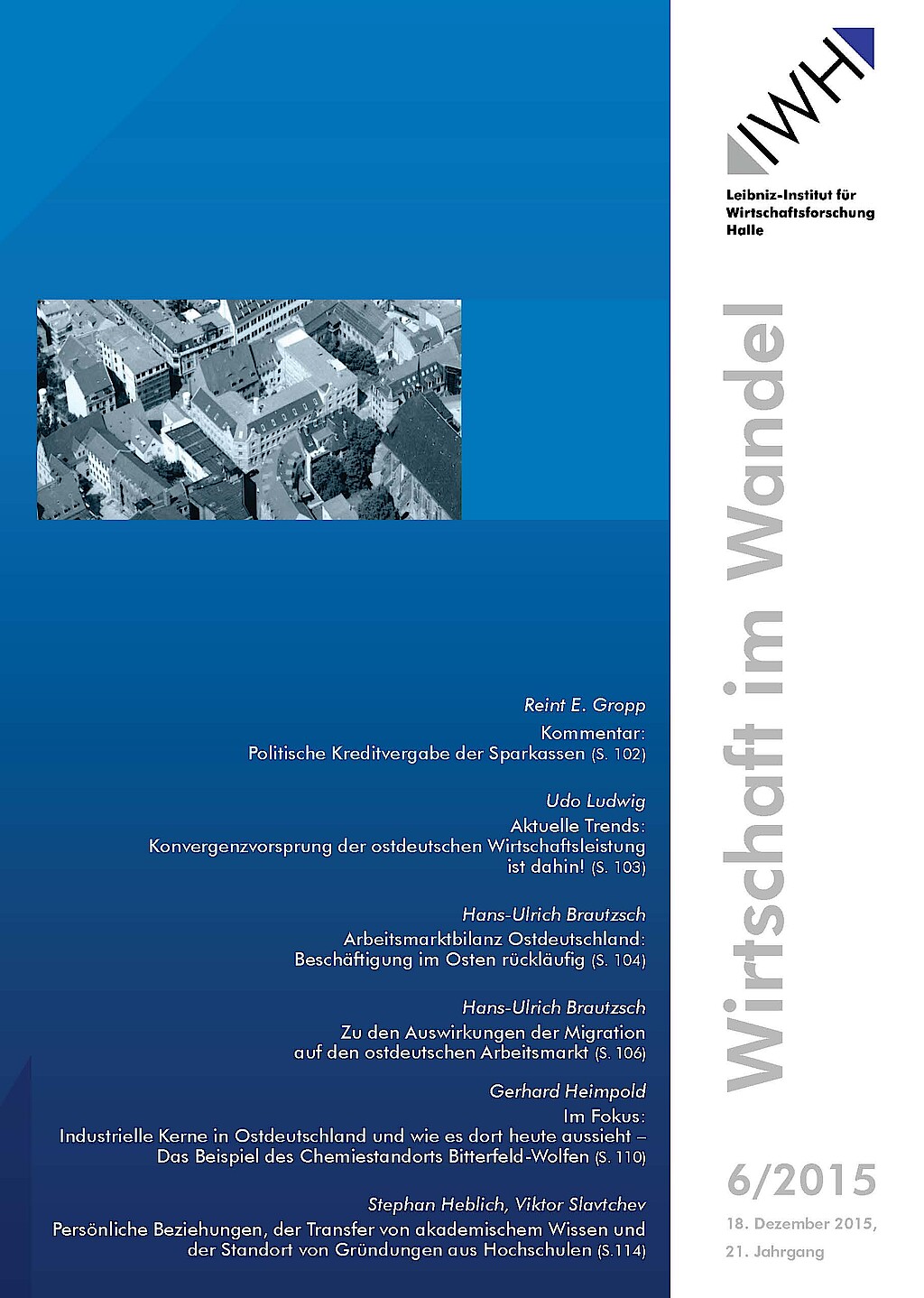Migration Affects Labour Market in Eastern Germany
Whom to contact
For Researchers

Vice President Department Head
If you have any further questions please contact me.
+49 345 7753-800 Request per E-MailFor Journalists

Internal and External Communications
If you have any further questions please contact me.
+49 345 7753-832 Request per E-MailIWH list of experts
The IWH list of experts provides an overview of IWH research topics and the researchers and scientists in these areas. The relevant experts for the topics listed there can be reached for questions as usual through the IWH Press Office.
Related Publications

Zu den Auswirkungen der Migration auf den ostdeutschen Arbeitsmarkt
in: Wirtschaft im Wandel, 6, 2015
Abstract
Die starken Migrationsprozesse beeinflussen zunehmend auch den ostdeutschen Arbeitsmarkt. Die Zuwachsraten bei der Zahl der Beschäftigten, den Arbeitslosen sowie den Leistungsbeziehern nach SGB II vor allem aus den mittel- und osteuropäischen Staaten mit Arbeitnehmerfreizügigkeit, den von der europäischen Schulden- und Vertrauenskrise besonders schwer betroffenen Ländern Griechenland, Italien, Portugal und Spanien sowie den Asylherkunftsländern sind gegenwärtig sehr hoch und liegen in der gleichen Größenordnung wie in Westdeutschland. Die Anteile von Migranten an der Bevölkerung und an relevanten Arbeitsmarktgrößen sind allerdings in Ostdeutschland erheblich niedriger als in Westdeutschland.



